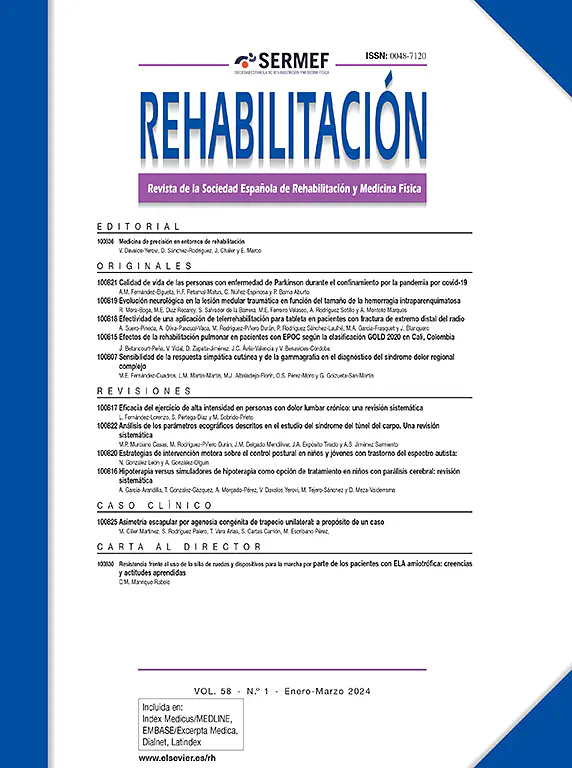Three-dimensional kinematic gait analysis in patients with spastic diplegia
Análisis cinemático tridimensional de la marcha en pacientes con diplejía espástica

Abstract
Spastic diplegia is characterised by the presence of spasticity, leading to a number of alterations requiring the most efficient solutions for motor control during gait. The aim of this study was to characterise gait through 3D kinematic analysis in patients with spastic diplegia, as well to describe head movement, to determine whether there is some homogeneity in the motor pattern between study subjects throughout the multiple gait cycles analysed. We analysed gait in 9 patients with spastic diplegia by means of photogrammetry-3D video and 100Hz sampling frequency. An original mechanical model was defined to calculate the projection of the reference systems of the body segments into the sagittal and frontal planes, as well as the angles formed with the horizontal plane. The graphic representation of the angles calculated in the sagittal and frontal planes identified the presence of certain “typical” kinematic patterns associated with the movements of the body segments. The coefficient of variation levels for the defined gait cycle events were between 1.41% and 19.76%. The proposed methodological procedures allowed kinematic characterisation of gait motor pattern in the analysed subjects. These procedures identified the presence of relatively homogenous motor patterns associated with the movements of the body segments.